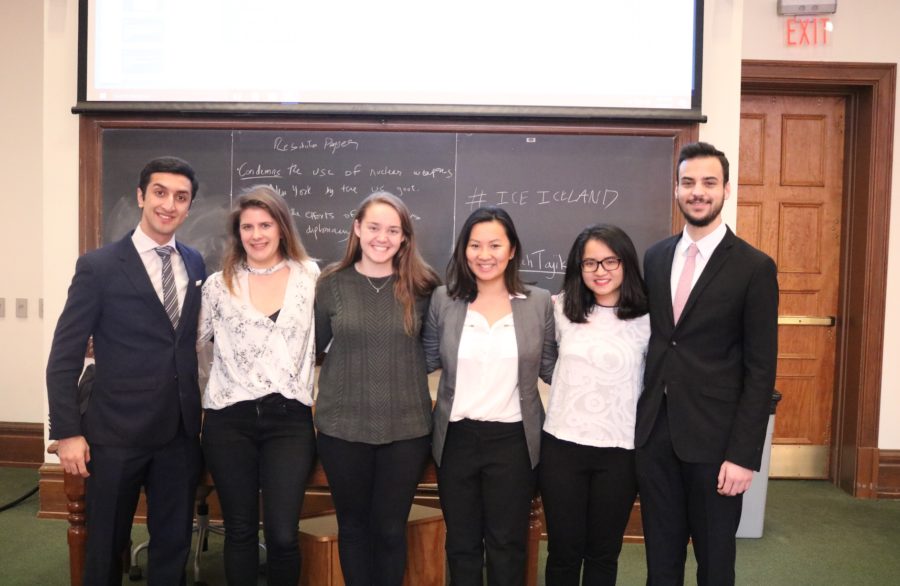Model UN Participates in First Simulation Event
The recently revived Dickinson College Model U.N. club hosted its first crisis simulation about alien invasions in Tajikistan and Iceland on Saturday, March 4.
The event attracted around six general members. Members of the executive board also took a role, playing nations such as the United States, Iceland and France. The event’s main theme was alien invasion, however, participants also had to deal with nuclear attacks and mass power outages.
According to Sam Weisman ’18, who represented Russia at the event, the simulation was “a balance of rapid-fire exchanges and calculated strategies, all in the absurd context of an alien invasion.” He also maintained that he liked the event because it taught him techniques about diplomacy. “I began to understand some techniques to compromise or push an agenda. I hope to learn more about these tools in negotiation.”
While the simulation’s topic, alien invasion, was not a typical MUN topic, according to Meghan Daschund ’18, president of Model U.N., participants were still invested in the discussions.
“I loved our first simulation because everyone was so enthusiastic,” she stated. “Model U.N. only really works when people get invested, and even though the premise of the simulation was a bit crazy, the negotiations, resolution and commitment shown by the group truly demonstrated what Model U.N. is really about.”
According to Daniel Duchain ’18, vice president, not only the simulation brought people together during the official discussions.
“Lunch was my favorite part, because people were socializing about the scenario, in a situation where that was not mandatory,” he said. “It really showed how MUN can bring people together and foster friendship.”
According to Alyssa Morrissey ’20, director of training, the first event served as an introduction for members who may not be familiar with the processes of a MUN conference.
“It [the simulation] was a chance for the members to become introduced to the terminology and procedures of MUN, while also getting a chance to step outside their comfort zone and speak up on behalf of an entire nation,” she maintained. “I really enjoyed everyone’s enthusiasm and willingness to become accustomed to MUN.”
General members, like Vy Huynh ’18, also enjoyed the event. Huynh stated that she was especially glad to have a less formal education event take place on campus.
“[Even] though it was only the first run of Model UN, I felt like this has the potential to attract a lot of participation, simply because this model gives a valuable opportunity to apply what we learn in class in a formal, educational yet still fun setting,” she stated.
While Daschund was especially proud of how well the executive board organized the event, she did receive suggestions from participants.
“There were a few suggestions from members after the conference about having someone officially pass notes and answer points of inquiry or speak directly to the leading chair during un-moderated caucuses,” she stated. “…I think that would be great to open up back channel negotiations. I also want there to be prizes in the future for best negotiator and most innovative delegate.”
Duchaine also echoed Daschund’s statement but added that he would like to see more people show up in the future.
“Future simulations will be bigger and better, and we want students from all perspectives to take part in it.”






